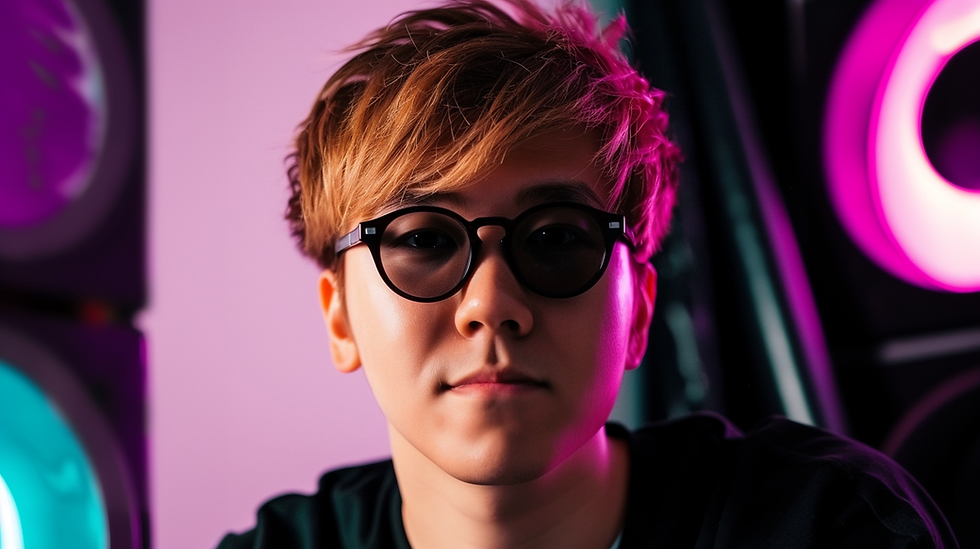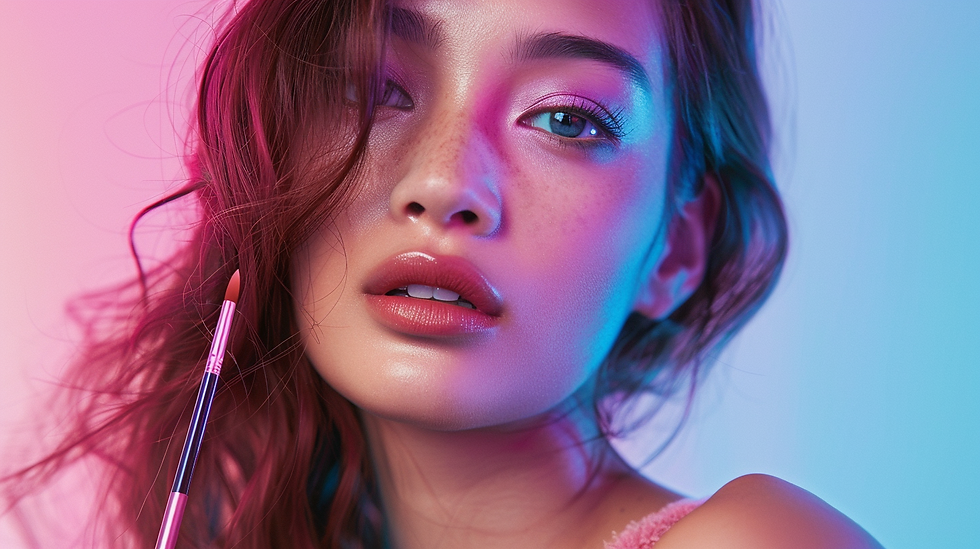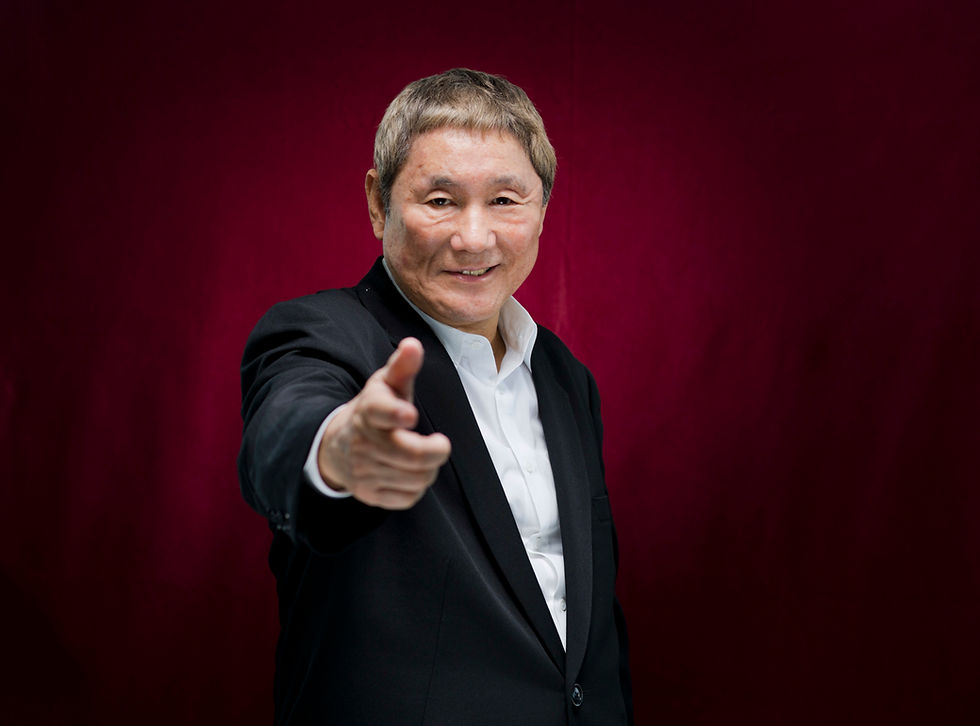
Influencer partnerships have become essential to modern marketing strategies, and Japan is no exception. With a unique cultural landscape and diverse social media platforms, influencer marketing in Japan offers opportunities and challenges. This blog post will try to understand the intricacies of influencer partnerships in Japan, providing a comprehensive guide for brands looking to leverage this powerful marketing tool.
Table of Contents
How to Influencer Partnerships in Japan
Understanding Japanese Social Media Platforms
Japan's social media ecosystem is distinct from the Western world, with several platforms that dominate the landscape. Understanding these platforms and their user demographics is crucial for effective influencer partnerships.
Instagram is widely popular in Japan, especially among younger demographics. It is a visual-centric platform where users share photos and videos, making it ideal for fashion, beauty, and lifestyle brands.
LINE
LINE is the leading messaging app in Japan. It is known for its unique sticker system and integration of various services, such as payments and news. LINE influencers often engage with followers through personalized messages and exclusive content.
Twitter is another prominent Japanese platform with a significant user base. It is known for real-time updates and trending topics, making it an excellent platform for influencers to engage with their audience on current events and viral trends.
TikTok
TikTok's popularity has surged in Japan, particularly among Gen Z. Its short-form video format is perfect for creative and engaging content, allowing influencers to showcase their personalities and connect with their followers.
Contact ULPA for expert help making your
mark with Influencer Marketing in Japan
User Demographics and Behavior
Japanese social media users exhibit unique behaviours compared to their Western counterparts. They are more likely to engage with content that feels authentic and personal. Privacy is also a significant concern, with many users preferring to follow influencers who respect their boundaries and provide genuine interactions.
Differences Between Japanese and Western Social Media Usage
Japanese social media users value community and belonging, often engaging in group-oriented activities and discussions. In contrast, Western users may prioritize individualism and self-expression. Understanding these differences is vital to crafting effective influencer partnerships that resonate with Japanese audiences.

Detailed Types of Influencers in Japan
Influencers in Japan can be categorized into four main types: Mega, Macro, Micro, and Nano influencers. Each type offers distinct advantages and challenges for brands.
Mega Influencers
Mega influencers have over a million followers and often include celebrities and well-known public figures. They offer extensive reach but can be costly to collaborate with. Brands looking for mass exposure can benefit from partnering with mega influencers.
Macro Influencers
Macro influencers have between 100,000 to 1 million followers. They are often experts in specific niches and provide a good balance of reach and engagement. Macro influencers suit brands targeting specific audience segments while maintaining a broad reach.
Micro-Influencers
Micro-influencers have 10,000 to 100,000 followers and are known for their high engagement rates and close relationships with followers. They are ideal for brands seeking authentic connections and targeted marketing.
Nano Influencers
Nano influencers have fewer than 10,000 followers and are often everyday individuals with strong community ties. They offer the most authentic and cost-effective interactions, perfect for localized campaigns and niche markets.
Cultural Context in Influencer Marketing
Cultural nuances play a crucial role in the success of influencer marketing campaigns in Japan. Brands must be sensitive to local customs, values, and preferences. Japanese culture places a high value on harmony, respect, and subtlety. Brands that align their messaging with these values can build trust and credibility with their audience. Conversely, those who overlook cultural nuances risk alienating potential customers.
Examples of Successful Culturally Sensitive Campaigns
KFC Japan: By promoting a Christmas tradition unique to Japan, KFC successfully integrated itself into Japanese culture, resulting in a significant boost in sales during the holiday season.
Nike Japan: A campaign highlighting local sports heroes and their perseverance resonated deeply with Japanese values of hard work and dedication, leading to widespread positive reception.

Tips for Aligning Influencer Content with Japanese Cultural Values
Respect Privacy: Ensure influencers respect their followers' privacy and provide content that feels personal yet unobtrusive.
Emphasize Community: Highlight the importance of community and group activities in influencer content.
Showcase Authenticity: Japanese audiences value genuine interactions, so encourage influencers to be authentic and relatable.
Contact ULPA for expert help making your
mark with Influencer Marketing in Japan
Developing Effective Influencer Campaigns
Creating a successful influencer campaign in Japan requires careful planning and execution. Here is a step-by-step guide to help brands develop compelling campaigns.
Step-by-Step Guide to Creating a Compelling Campaign
Define Objectives: Clearly outline the campaign's goals, such as increasing brand awareness, driving sales, or boosting engagement.
Identify the Right Influencers: Select influencers whose values, audience, and content style align with the brand's objectives.
Craft a Clear Brief: Provide influencers with a detailed brief that outlines the campaign's goals, key messages, and creative guidelines.
Foster Creative Freedom: Allow influencers the freedom to create content that feels natural and authentic to their style while adhering to brand guidelines.
Monitor and Measure: Track the campaign's performance using relevant metrics and adjust strategies as needed to optimize results.
Balancing Creative Freedom with Brand Guidelines
It's important to balance allowing influencers creative freedom and ensuring they adhere to brand guidelines. This balance ensures the content remains authentic while effectively conveying the brand's message.

Key Elements of Storytelling and Visual Appeal in Campaigns
Narrative: Develop a compelling narrative that resonates with the target audience.
Visuals: Use high-quality visuals that capture attention and convey the brand’s identity.
Engagement: Encourage interactive content that fosters engagement and builds a sense of community.
Legal and Ethical Considerations in Influencer Marketing
Navigating the legal and ethical landscape of influencer marketing in Japan is essential to avoid pitfalls and maintain a positive brand image. Japan has specific regulations governing advertising, including disclosure requirements for sponsored content. Brands must ensure that influencers disclose their partnerships to maintain transparency and comply with local laws.
Common Legal Pitfalls and How to Avoid Them
Non-Disclosure: Ensure influencers disclose sponsored content to avoid penalties and maintain trust with their audience.
False Claims: Avoid making exaggerated or false claims about products to prevent legal repercussions and damage to the brand’s reputation.
Copyright Infringement: Use original or properly licensed content to avoid copyright issues.
Ethical Guidelines for Influencers and Brands
Transparency: Maintain transparency in all influencer partnerships and ensure clear disclosure of sponsored content.
Authenticity: Encourage influencers to create genuine, honest content that aligns with their brand.
Respect: Respect cultural values, privacy, and the audience's preferences in all marketing activities.
Contact ULPA for expert help making your
mark with Influencer Marketing in Japan
Japan, Idols, and Influencer Marketing

Japan's influencer culture has deep roots in the country's idol culture. Idols in Japan are multi-talented performers who engage intensely with their fans, creating solid parasocial relationships. This approach has influenced the way influencers interact with their audiences in Japan.
The Evolution of Idol Culture
Idol culture in Japan dates back to the late 1970s and 1980s, when multi-talented performers were trained to excel in various entertainment forms, such as singing, dancing, and acting. Idols are expected to maintain a perfect public image and interact closely with their fans, creating a strong sense of loyalty and trust.
Parallels Between Idols and Influencers
Like idols, influencers in Japan engage intensively with their followers through frequent posts, live streams, and personal interactions. This engagement fosters parasocial relationships, where followers feel a close personal connection with the influencer. This connection makes influencer endorsements highly effective, as followers trust their recommendations.
Contact ULPA for expert help making your
mark with Influencer Marketing in Japan
How to Make Influencer Partnerships in Japan
Collaborating with Japanese influencers requires careful selection and communication to ensure a successful partnership.
Selecting the Right Influencers
Brand Alignment: Ensure the influencer's brand aligns with the client's brand and campaign goals.
Audience Relevance: Choose influencers whose audience matches the target demographic for the campaign.
Content Quality: Assess the influencer's content quality, engagement rates, and past collaborations to determine suitability.
Effective Communication with Influencers
Respectful Language: Use respectful language and tone in all communications, reflecting Japanese cultural norms.
Clear Briefs: Provide detailed briefs outlining campaign goals, expectations, and deadlines.
Timely Responses: Respond to influencers promptly to build trust and maintain smooth communication.
Tips for Healthy Communication with Japanese Influencers
Track Response Times: Keep track of when you expect responses from influencers. This helps in planning and knowing when to move forward if an influencer is uninterested.
Respectful Language: Japanese culture values respect, so ensure courteous and professional communication.
Detailed Communication: Provide clear and detailed information about the project, including company background and campaign goals, to build trust and ensure the influencer understands the project.
Timely Responses: Respond promptly to influencers to show their needs and input are valued.
Check for Competitor Collaborations: Ensure the influencer is not currently working with competitor brands to avoid conflicts and ensure clear messaging.

Influencer Risk Assessment
Why Should You Perform an Influencer Risk Assessment?
Performing an influencer risk assessment is crucial for maintaining brand reputation control. Collaborating with an influencer who contradicts your brand values or has a history of controversial behaviour can severely impact your brand's reputation. A thorough risk assessment helps identify and mitigate potential risks before entering into a partnership.
Key Components of an Influencer Risk Assessment
A comprehensive influencer risk assessment involves several key components:
Reputation and Credibility: Assess the influencer's reputation and credibility within their industry and among their audience. This involves examining past behaviour, controversies, scandals, and public perception.
Content Quality and Brand Alignment: Evaluate the quality of the influencer's content and its alignment with the brand's image, values, and target audience. Content that is low-quality, offensive, or not in line with the brand's messaging can risk the brand's reputation.
Audience Authenticity and Engagement: Examine the influencer's audience's authenticity and the engagement level they receive on their content. Fake followers, low engagement rates, or a lack of genuine connection with the audience can undermine the collaboration's effectiveness.
Compliance with Advertising Regulations: Ensure the influencer complies with advertising regulations and guidelines, such as disclosing sponsored content and adhering to truth-in-advertising principles. Non-compliance can lead to legal and regulatory issues for the brand.
Ethical Considerations: Consider ethical factors such as the influencer's integrity, transparency, and alignment with the brand's values. Influencers who engage in unethical behaviour or promote questionable products can damage the brand's reputation.
Past Collaborations and Partnerships: Review the influencer's track record of past collaborations and partnerships with other brands. This can provide insights into the influencer's professionalism, reliability, and success in promoting products or services.
Contact ULPA for expert help making your
mark with Influencer Marketing in Japan
Benefits of Performing an Influencer Risk Assessment
Performing an influencer risk assessment offers several benefits:
Protecting Brand Reputation: By evaluating an influencer's background, behaviour, and audience, brands can mitigate the risk of associating with influencers who may harm their reputation through controversial content, unethical practices, or inappropriate behaviour.
Ensuring Brand Alignment: An influencer risk assessment helps ensure that the influencer's values, content, and audience align with the brand's image, values, and target audience. This alignment increases the likelihood of a successful collaboration and strengthens the brand's messaging.
Compliance with Regulations: By assessing an influencer's compliance with advertising regulations and guidelines, brands can avoid legal and regulatory issues associated with non-disclosure of sponsored content, misleading advertising practices, or other violations.
Maximizing ROI: By partnering with influencers with authentic, engaged audiences and a track record of successful collaborations, brands can maximize their influencer marketing campaigns' return on investment (ROI).
Identifying Potential Risks: An influencer risk assessment helps brands identify potential risks associated with collaborating with specific influencers, such as fake followers, low engagement rates, past controversies, or ethical concerns. By recognizing these risks early on, brands can proactively mitigate or avoid them altogether.
Enhancing Trust and Credibility: By thoroughly vetting influencers before partnering with them, brands demonstrate their commitment to transparency, authenticity, and ethical business practices. This enhances trust and credibility among consumers, who are increasingly wary of influencer marketing tactics.
Improving Decision-Making: An influencer risk assessment gives brands valuable insights and data to inform their decision-making process when selecting influencers for collaborations. By making informed decisions, brands can minimize the likelihood of adverse outcomes and increase the chances of a successful partnership.

Case Studies and Practical Examples
To better understand influencer marketing in Japan, examples from Japanese agencies showcase the costs and expected results for major channels like YouTube and Instagram.
YouTube Collaboration: Homemaker Subscription Service
Objective: Increase purchases of a ready-made meal subscription service.
Strategy: Collaborate with a YouTuber to introduce the product in their video, featuring a limited-time collaboration product.
Content: The YouTuber targets busy homemakers, emphasizing how the service saves time in the kitchen. They highlight the special collaboration set that discounts the first purchase.
Results: The video attracted 6,200 visits from viewers. The collaboration set, priced at ¥8,000, received 106 orders. Total sales: ¥858,000
Cost: The campaign cost ¥2,000,000 (approximately $18,000).
Twitter Collaboration: Beauty Product for Mask Wear
Objective: Raise awareness of a beauty product that prevents makeup from smudging under masks.
Strategy: Partner with a beauty influencer who posts about the product on Twitter. The post is then promoted as a third-party ad, with secondary usage rights for the client.
Content: The influencer posts before-and-after photos showing the product's effectiveness during the COVID-19 pandemic and the summer season.
Results: The original post received 1.3 million impressions, 13,000 likes, and 1,500 retweets. The third-party ad campaign garnered 3 million impressions and 2.3 million engagements, with a 75% engagement rate.
Cost: The campaign cost ¥3,000,000 (approximately $27,000).
Make-Up Expo Appearance: Makeup Workshop
Objective: Enhance the excitement of a booth at a Make-Up Expo.
Strategy: Invite a beauty YouTuber to host a makeup workshop and discuss the video creation process at the make-up company's booth, using the official make-up and branded equipment.
Content: The YouTuber demonstrates makeup techniques, answers questions, and conducts a live giveaway.
Results: The event was a full house and significantly contributed to the festival's success.
Cost: The campaign costs ¥750,000 for a 2-hour appearance, with an additional ¥100,000 fee for using the influencers' Twitter account to promote the event.
Top 10 Influencer Agencies in Japan

The Japanese Multi-Channel Network landscape is vibrant and dynamic, with numerous agencies shaping the online content creator scene. Here’s a look at the top 10 MCN companies in Japan based on factors like subscriber base, revenue, and industry influence:
Rank | MCN Company | Focus | Total MCN Subscribers (Million) |
1 | UUUM | Entertainment, Gaming, Lifestyle | 120 |
2 | VAZ | Entertainment, Music, Beauty | 70 |
3 | MCNS | Entertainment, Lifestyle, Education | 55 |
4 | CyberAgent | Entertainment, Music, Technology | 45 |
5 | GReeeeN | Entertainment, Lifestyle, Music | 40 |
6 | NextStage | Entertainment, Music, Beauty | 38 |
7 | SPICE | Entertainment, Music, Beauty | 35 |
8 | Jellyfish Entertainment | Music, Entertainment | 33 |
9 | Avex Entertainment | Music, Entertainment, Talent Management | 32 |
10 | WACK | Music, Entertainment | 31 |
Note on Language and Costs
It is important to note that most of the major agencies in Japan do not have adequate resources to provide English support for companies from overseas. Those with English language support tend to be the most prominent agencies and, consequently, have much larger channels with significantly higher associated costs. Using a consultancy like Ulpa can reduce long-term costs by navigating the barriers to entry that new Japanese companies often face. Ulpa handles all the intricate details of running campaigns on your behalf, allowing you to focus on building your company.
Contact ULPA for expert help making your
mark with Influencer Marketing in Japan
Talent Agencies in Japan

The Role of Talent Management Agencies
A unique aspect of using influencers in Japan is the involvement of talent management agencies. Many large influencer accounts belong to celebrities who talent agencies micromanage. These agencies manage every aspect of the celebrity’s public life, including their social media presence. This management ensures a polished image but also significantly increases the cost of collaboration.
Celebrity Influence and Cost Implications
Unlike the West, where many social media stars have risen organically, Japan's top influencers are often celebrities who have transitioned from traditional media. For example, Watanabe Naomi, one of Japan's top stars, had 8.9 million followers on Instagram as of 2019. Celebrities like her often bring an existing fanbase to social media, making their reach extensive but costly. Engaging with celebrities managed by talent agencies can be prohibitively expensive. Talent agencies often charge a premium for access to these high-profile individuals. For example, contracting a well-known "tarento" (celebrity) for a single post can cost significantly more than engaging with smaller influencers.
Independent Influencers and Strategic Approach
For cost-effective campaigns, working with smaller influencers who talent agencies do not sign is advisable. Many influencers with fewer than 100,000 followers on Instagram operate independently and are open to collaborations that align with their brand. These influencers often charge lower fees and, in some cases, may be willing to promote brands in exchange for products. In our work, we’ve found that negotiating directly with independent influencers can lead to substantial savings. For instance, we engaged Instagram influencers with over 50,000 followers for luxury event promotion at around ¥50,000 (approximately $300-$400) per post. The cost could have been between ¥225,000 and ¥450,000 (approximately $1,500 to $4,000) per post through a talent agency.
While independent influencers are more affordable, they may lack the experience and professionalism of managed celebrities. Celebrities typically have years of experience in brand promotion through TV commercials and PR events, which helps them create compelling and converting content. Independent influencers, on the other hand, may need more guidance to produce the desired results. To mitigate these drawbacks, start with a clear vision of the desired content before selecting an influencer. By setting up the campaign with specific goals and providing clear guidelines, you can help independent influencers create content that meets your brand’s expectations. Ensuring the event or product is photogenic and worth posting about can also enhance the influencer's ability to produce appealing content.
Influencer partnerships in Japan offer a powerful way for brands to connect with their target audience and achieve their marketing goals. By understanding the unique social media landscape, leveraging the strengths of different types of influencers, respecting cultural nuances, and adhering to legal and ethical guidelines, brands can create successful and impactful influencer campaigns. With careful planning and execution, influencer partnerships can drive significant results and help brands establish a strong presence in the Japanese market.
FAQ Section
What is influencer marketing in Japan?
Influencer marketing in Japan involves partnering with social media influencers to promote products and services. It leverages influencers' trust and following to reach target audiences using platforms like Instagram, LINE, Twitter, and TikTok. This approach is effective due to Japanese users' unique social media behaviours and cultural preferences.
What is the importance of cultural nuances in Japanese influencer marketing?
Cultural nuances are crucial in Japanese influencer marketing because they ensure campaigns resonate with local values. Japanese culture values harmony, respect, and subtlety. Brands must align their messaging with these values to build trust and credibility, avoiding alienating potential customers by overlooking cultural sensitivities.
What is the role of social media platforms in Japanese influencer marketing?
Social media platforms play a pivotal role in Japanese influencer marketing. Key platforms include Instagram for visual content, LINE for personalised interactions, Twitter for real-time updates, and TikTok for short-form videos. Each platform has distinct user demographics and engagement styles, essential for tailoring influencer partnerships to reach specific audiences effectively.
What is an influencer risk assessment?
An influencer risk assessment evaluates potential influencers to ensure they align with a brand's values and do not pose reputational risks. It includes checking the influencer's reputation, content quality, audience authenticity, compliance with regulations, and past collaborations. This assessment helps brands avoid negative consequences and ensure successful partnerships.
What is the difference between Mega, Macro, Micro, and Nano influencers in Japan?
Mega Influencers: They have over a million followers, often celebrities, and offer extensive reach but at high costs.
Macro Influencers: Have 100,000 to 1 million followers, specialising in specific niches with good engagement and broad reach.
Micro-Influencers: They have 10,000 to 100,000 followers and are known for high engagement and close follower relationships, which is ideal for targeted marketing.
Nano Influencers: They have fewer than 10,000 followers, offer the most authentic interactions and are perfect for localized and niche campaigns.
Ready to learn how to launch, integrate and scale your business in Japan?
Download our intro deck and contact ULPA today to understand how we will help your company learn the rules of business in Japan, and then redefine those rules.
Let The Adventure Begin.

Comments